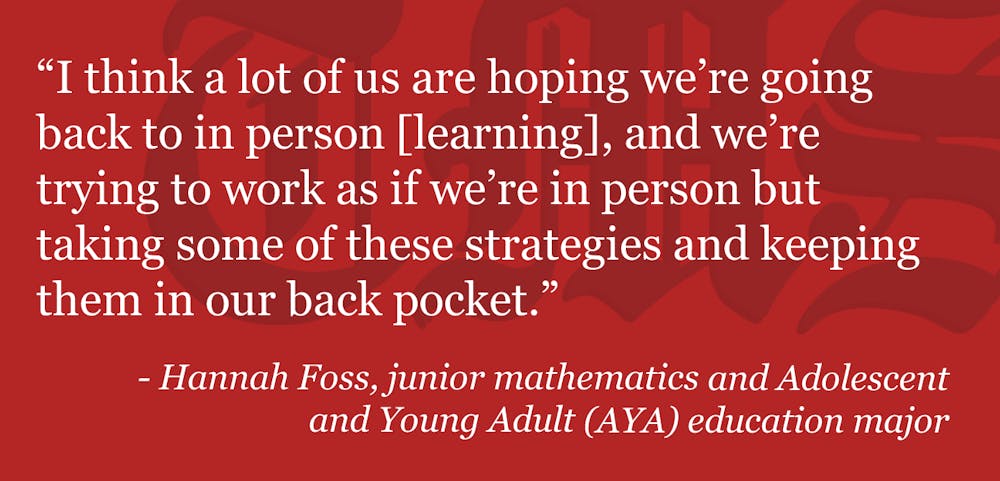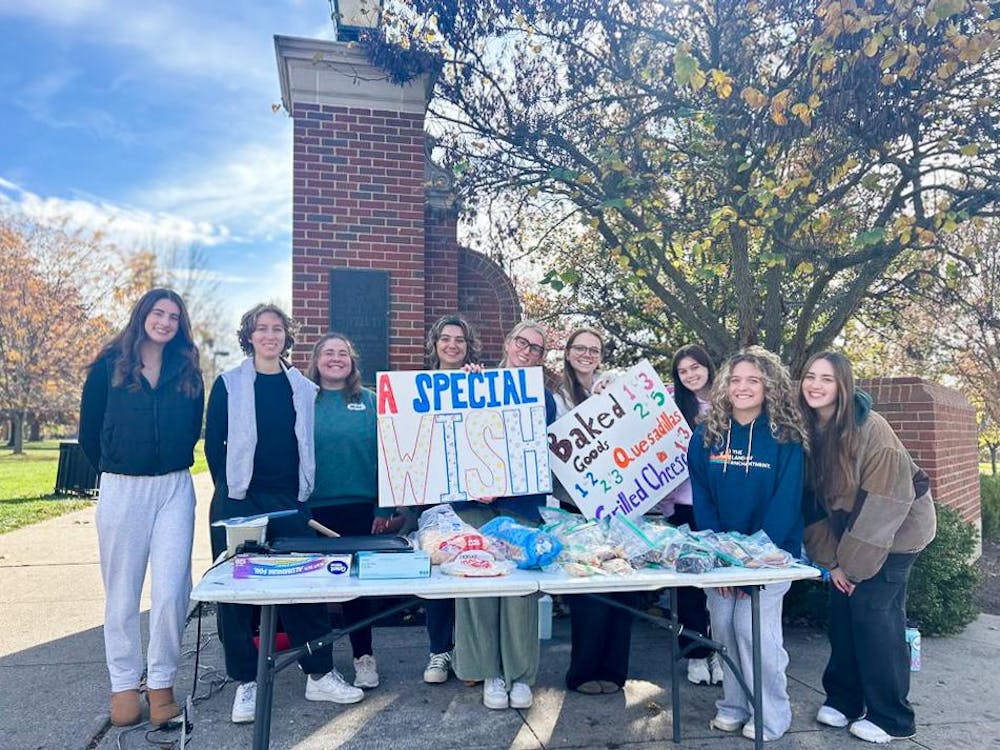With summer internships and full-time opportunities after college on the horizon, some education majors have found themselves at a standstill.
The shortfall of teaching opportunities can, like most other events of the past year, be attributed to COVID-19. To prevent spreading the virus, most schools have been forced to shutter in-person teaching, with just less than 93% of households with school-age children reporting some form of distance learning during COVID-19 according to the U.S. Census.
However, for college students who need the teaching hours to gain necessary field experience for job opportunities, distance learning has brought an added layer of stress.
Angela Ferguson, the assistant principal of curriculum and instruction at Ohio Connections Academy (OCA), acknowledges the impact of the pandemic in creating the virtual learning opportunities for students and tutors .
“I honestly believe that partially due to the pandemic, where a lot of the schools were not allowing college students into their buildings at the time, the virtual world then opened up a couple of doors for professors to get field experience for their students,” Ferguson said.
OCA, through its collaboration with Miami University, hopes to provide field experience for college students while simultaneously helping kindergarten and first-grade students.
The collaborative tutoring program is divided into two sections: early childhood education and middle and high school education.
Early childhood education uses Adobe Connect’s Live Lesson format to start tutors off with observation before moving into teaching lessons on their own.
The middle and high school education program involves tutors as a part of its synchronous programs with teachers within the live lessons and provides tutoring for students using one-on-one breakout rooms.
Hannah Foss, an OCA tutor majoring in Mathematics and Adolescent and Young Adult (AYA) Education, also joined the program to get her real hours of being a teacher.
“Last semester was full of webinars, and I feel like I wasn’t getting classroom experience, and they [Ohio Connections Academy] were like, ‘We have this tutoring program but you can also observe lessons from a teacher,’” Foss said. “I was like, ‘Sign me up! More student interaction, why not?’”
Like Foss, Calista Flores is an AYA Math Education major, and tutors OCA students in math. She also joined due to the lack of field experiences for education majors like her.
Enjoy what you're reading?
Signup for our newsletter
“I wanted to get involved because there were not many field opportunities this school year,” she wrote in an email to The Miami Student. “As well as to see if online learning could be a permanent option for me. Dr. Todd Edwards reached out to [the AYA Math Cohort], and I put my name down on a spreadsheet. The rest is history.”
Flores said she has had a very positive experience tutoring for OCA.
“I feel like I have made some good connections with OCA!” Flores said. “On my teaching, I feel like I have learned some valuable skills for successfully engaging students online.”
Foss said giving students more time to adjust within the new atmosphere was key.
“Typically, in a tutoring or classroom setting, you have students answering questions and verbally speaking that,” Foss said. “Now they’re going from that to typing it all out.”
Foss described the process as a waiting game, particularly because tutors don’t want to move on with material and leave a student behind.
She has, however, had better luck with finding students as a math tutor.
“This Monday I did work with a student for a full hour, and that depends on how many people are in the waiting room,” Foss said.
While she’s happy to be getting the experience, teaching through a screen creates barriers that can’t be solved by simple explanation.
“It’s kind of complicated working on lessons with them, because half the time it’s hard to explain the process behind it,” Foss said. “I’ll be talking through the process but also giving them the answer because they won’t initiate. I’ve had students that come and are like, ‘I’m confused on this topic.’ Those are more complicated because I don’t have access to their textbook.”
Sometimes students drop in and don’t know why they are confused or how to get past a particular problem.
“That’s a big process, and I’ve heard some of my peers had to take ten minutes of just figuring out where they were confused before actually being able to go anywhere with them,” she said.
Foss had mixed opinions on whether the program had prepared her to teach virtually.
“I think a lot of us are hoping we’re going back to in person [learning], and we’re trying to work as if we’re in person but taking some of these strategies and keeping them in our back pocket,” Foss said. “The webinars we’ve been able to go to have been a little more helpful in preparing us for potentially staying in that setting. We’re understanding how to do things virtual, but we’re trying to focus more on doing things in person.”




